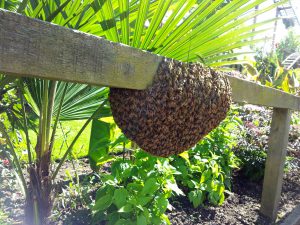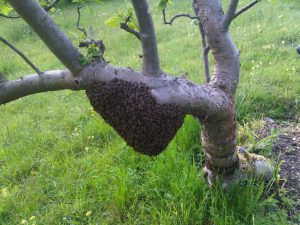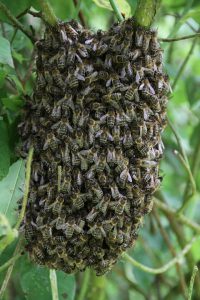Swarms - What To Do
Do you think you have a swarm of bees?
Beekeepers are often approached about winged, flying creatures, especially in the spring and summer period, when they are their most active and are no cause for alarm.
Beekeepers are ONLY able to help with swarms of honey bees we are not able to respond to calls about wasps or bumble bees.
Please follow this link to the BBKA Swarm Identification to confirm you have a swarm of honey bees before contacting us.
Swarming is the natural process by which colonies of honey bees increase their numbers. If you see a swarm please refer to the with a postcode to the directory below.
The characteristic loud hum from a swirling swarm of bees is one of nature’s striking phenomena. A swarm commonly settles as a ball hanging from a bush or tree before moving on when a new permanent nest site has been found.
Left alone, a swarm is quite harmless, and should move on in a day or so. However, it is valuable and if it needs to be removed, it should be left to beekeepers.
Sending out a swarm is the natural way in which honey bee colonies increase their numbers. They are looking for new homes. Honey bees in a swarm are usually very gentle and present very little danger. They can be made aggressive if disturbed or sprayed with water.
As honey bees can no longer survive in the wild, it is important to collect swarms and return them to the care of beekeepers. This year it is even more important to save swarms as there is a shortage of honey bees following the disastrous winter losses in the last couple of years.
A swarm can be put into a bee hive and become a productive colony. Many new beekeepers, and some of the many people who have taken up beekeeping this year, start out with a swarm. We need all the bees we can get.


